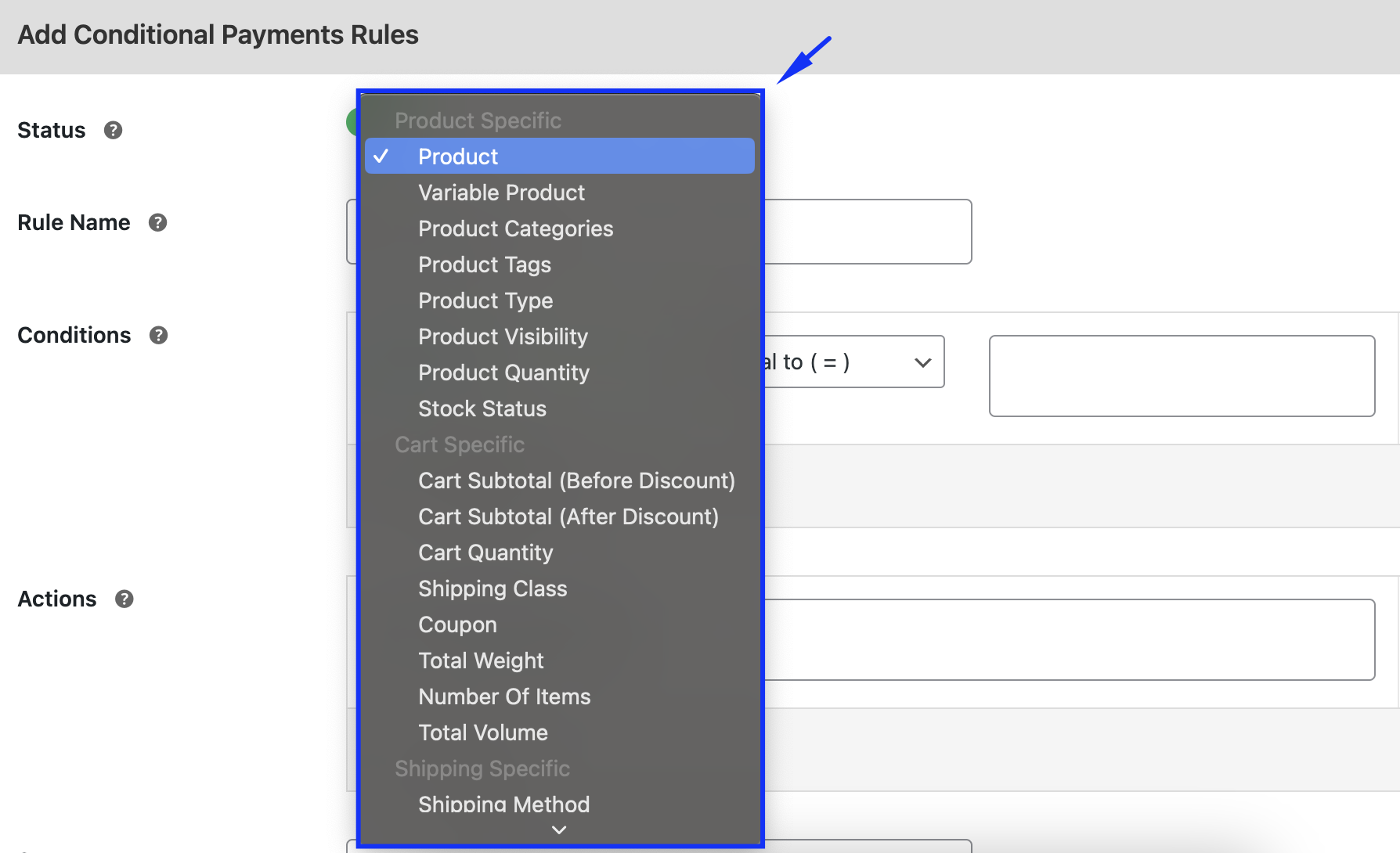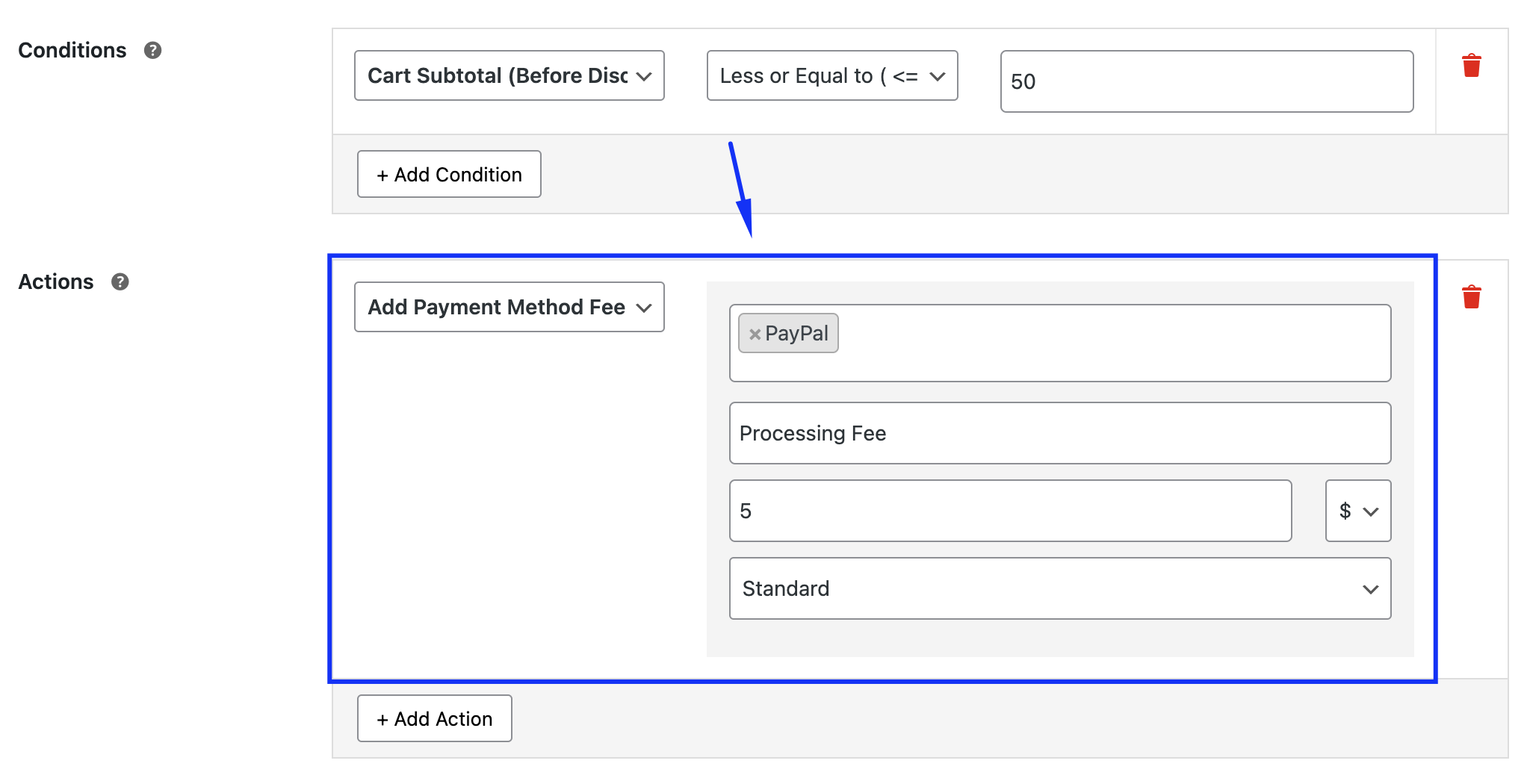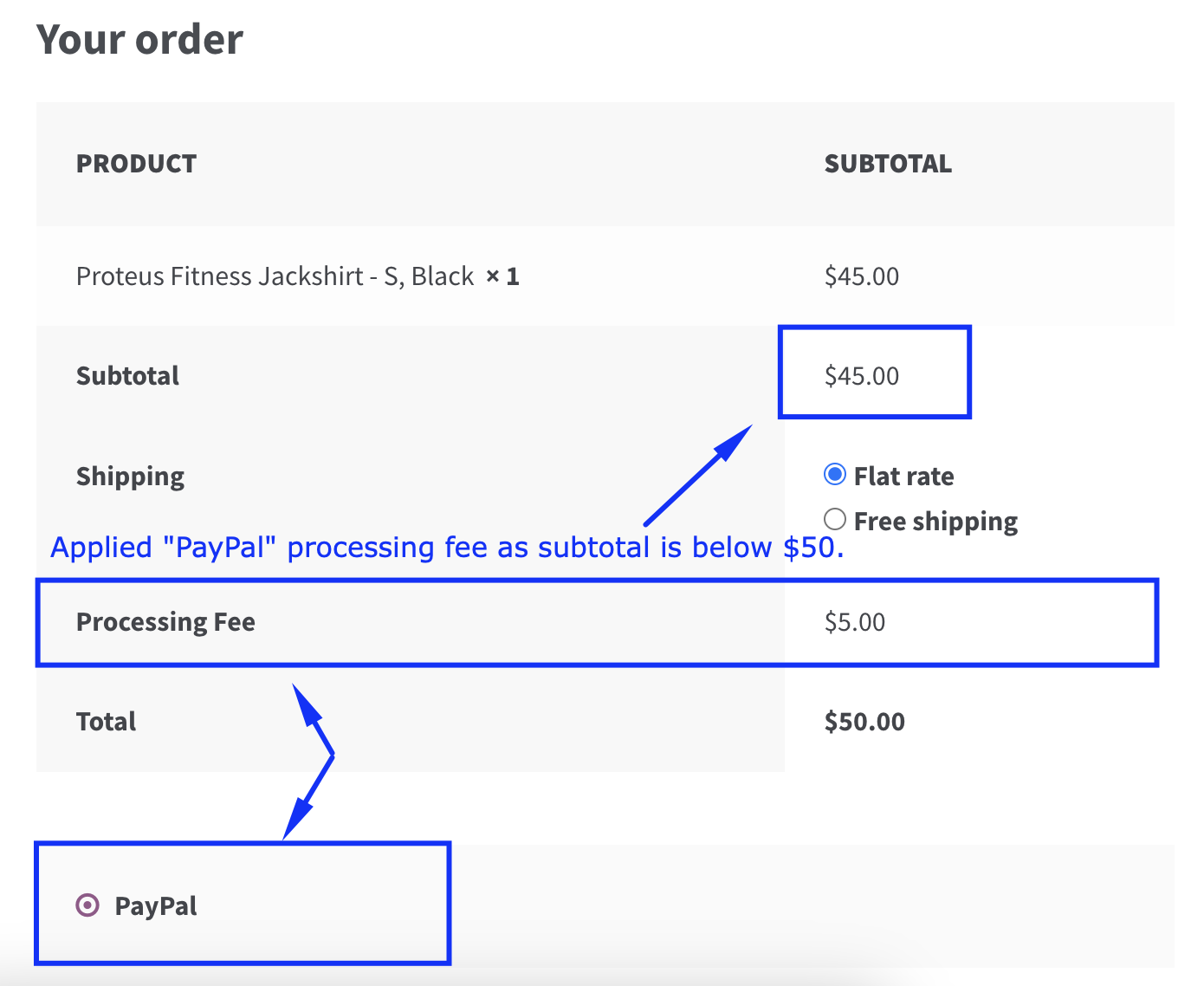Getting Started with Conditional Payments for WooCommerce Plugin
Introduction
Welcome to the Conditional Payments for WooCommerce plugin! This advanced plugin allows you to customize and control the payment methods available during checkout based on various conditions. With features such as product-specific, cart-specific, user-specific, location-based, and more rules, you can tailor payment options to meet your store’s unique requirements.
This plugin helps you streamline the checkout process, improve customer experience, and optimize payment workflows effectively.
In this documentation, we’ll walk you through the steps to set up and utilize all the features of the plugin.
In This Article
Step 1: Getting Started with Install & Activate the Plugin
To begin using the Conditional Payments for WooCommerce plugin, follow these steps:
- Install the Plugin: Navigate to Plugins > Add New, upload the "Conditional Payments for WooCommerce" plugin, and install it.
Activate the Plugin: After installation, activate it to enable the plugin features.

Admin: Plugin Activation - Access the Plugin Dashboard: Locate the Conditions menu under WooCommerce > Settings > Payments in your WordPress admin panel.
Step 2: Setting Up Payment Restriction Rules
Navigate to Conditions: Navigate to the "Conditions" menu and select "Add New".

Admin: Add new conditional payment rule Rule Name and Status: Enter a descriptive name for the rule (e.g., “Disable PayPal for orders above $500”) and set the rule status to Active.

Admin: Configure rule name and status Set Rule Conditions: In the Conditions section, you can configure the conditional payment rule conditions based on product-specific, cart-specific, user-specific, location-based, and more.

Admin: Configure rule conditions Set Rule Actions: In the Actions section, you can enable or disable payment methods and add payment method fees based on the configured conditions.

Admin: Configure rule actions

Front: Checkout page with limited payment methods
Step 3: Enabling or Disabling Payment Methods Based on Conditions
The plugin allows you to create highly customizable conditional payment rules based on different conditions. These rules can be applied not only by product and category but also by users, cart contents, billing or shipping address fields, and even time-based criteria.
1. Product-Specific Rules:
Set conditions based on individual products, product categories, tags, product quantity, or specific product attributes.
📌 Example Use Case:
- Disable "Cash on Delivery" for luxury product categories like "Electronics" or "Jewelry".
- Restrict payment gateways like "Credit Card" for products tagged as "Subscription".
2. Cart-Specific Rules:
Define rules based on the cart's subtotal, item count, weight, shipping class, etc.
📌 Example Use Case:
- Restrict PayPal if the cart subtotal exceeds $1,000.
- Disable "Cash on Delivery" for carts with more than 10 items or exceeding a weight of 50kg.
3. Shipping-Specific Rules:
Set conditions tied to the shipping method selected during checkout.
📌 Example Use Case:
- Allow "Cash on Delivery" only if customers select "Standard Shipping".
- Restrict "Credit Card" payments for orders marked as "Pickup at Store".
4. Customer-Specific Rules:
Customize payment options based on the customer's status (logged in/out), user roles, or specific users.
📌 Example Use Case:
- Restrict payment methods like "Bank Transfer" for guest users.
- Allow "Net 30 Payment" only for wholesale customers or premium members.
5. Time-Specific Rules:
Create conditions based on specific days, dates, or times.
📌 Example Use Case:
- Enable "Credit Card" payments only on weekdays from 9 AM to 6 PM.
- Disable "Bank Transfer" during holidays (e.g., December 24th to January 1st).
6. Billing Address-Specific Rules:
Set rules based on the billing address details such as country, city, postal code, or email address.
📌 Example Use Case:
- Restrict "Cash on Delivery" for customers billing from high-risk postal codes.
- Disable "Credit Card" payments for orders billed to certain cities.
7. Shipping Address-Specific Rules:
Define rules based on the shipping address, including country, city, postal code, or name.
📌 Example Use Case:
- Allow "Cash on Delivery" only for shipping addresses within a specific region.
- Disable "Bank Transfer" for orders shipped to international destinations.

These versatile conditions let you craft precise payment restrictions tailored to your business needs.
Step 4: Adding Fees to Payment Gateways
- Create a New Rule: Navigate to the rules section and create a new conditional payment rule. Provide a descriptive name (e.g., “PayPal Transaction Fee Rule”) and enable the rule.
- Set Conditions: Define the conditions under which the payment fee will apply, such as cart subtotal, customer location, or specific products.
- Configure Actions: In the Actions section, select "Add Payment Method Fee". Choose the payment gateway (e.g., PayPal), then set:
- Fee Title: e.g., "Processing Fee."
- Amount: e.g., $5 or 2%.
- Type: Fixed amount or percentage-based fee.
- Tax Settings: Select the tax class which will apply to the fee.
- Save and Test the Rule: Save your configuration and test to ensure the fee applies correctly during checkout.

📌 Example Use Case:
Add a $5 transaction or processing fee for "PayPal" when the cart subtotal is below $50 to offset processing costs.
Apply a 2% surcharge for "Credit Card" payments for customers shipping to high-risk regions.

Step 5: Debugging and Testing Your Rules
Enable Debug Mode: To enable Debug Mode, go to the "Conditions" menu and find the Debug Mode option under Advanced Settings. Activate it.

Admin: Enable debug mode View condition evaluations in real-time, including pass/fail statuses, to ensure accurate configurations.

Front: Checkout page with debug mode
📌 Example Use Case:
Use debug mode to verify if a fee rule for "Stripe" based on the cart's shipping class is correctly applied.
If a product-specific payment rule isn’t working, enable debug mode to see if the rule is being evaluated correctly, helping you identify any misconfigurations.
Step 6: Conclusion
The Conditional Payments for WooCommerce plugin offers unmatched flexibility to create a tailored checkout experience. By customizing payment methods based on specific rules, you can enhance customer satisfaction and optimize operations.
Leverage the full potential of this plugin to meet your business needs. For further assistance, refer to our documentation or reach out to our support team.







